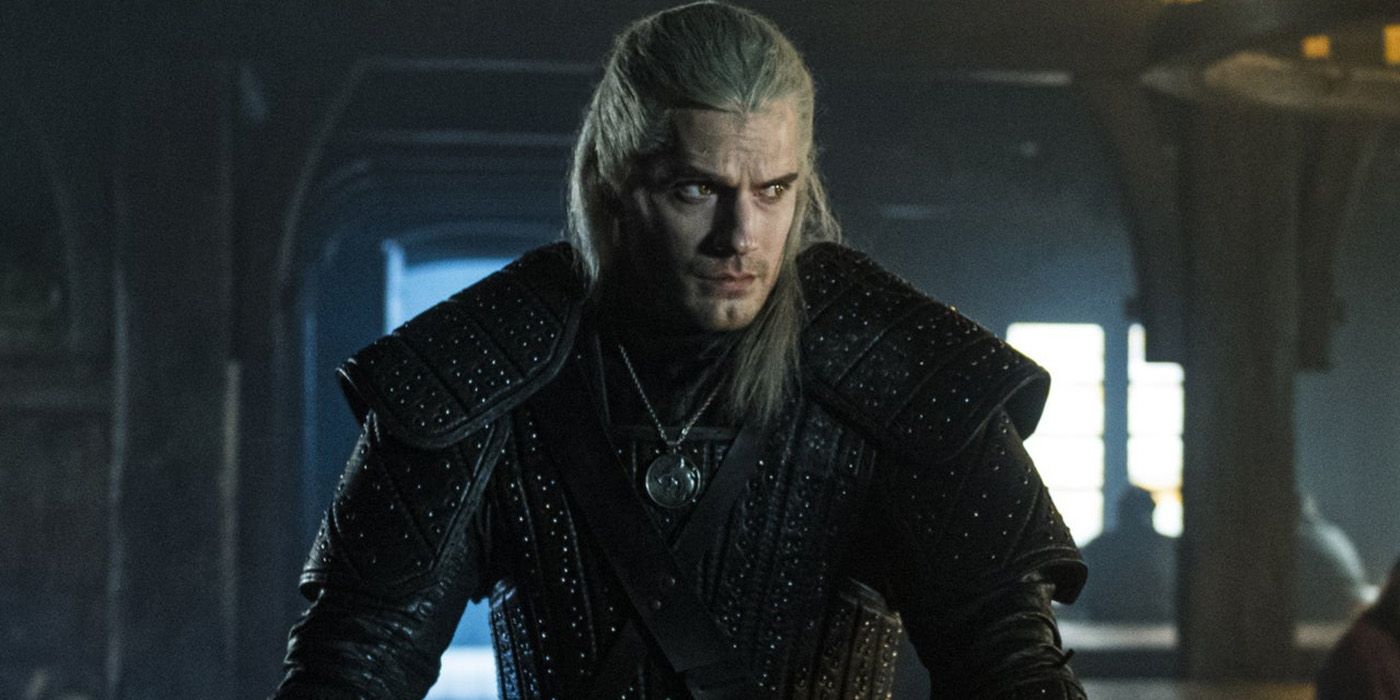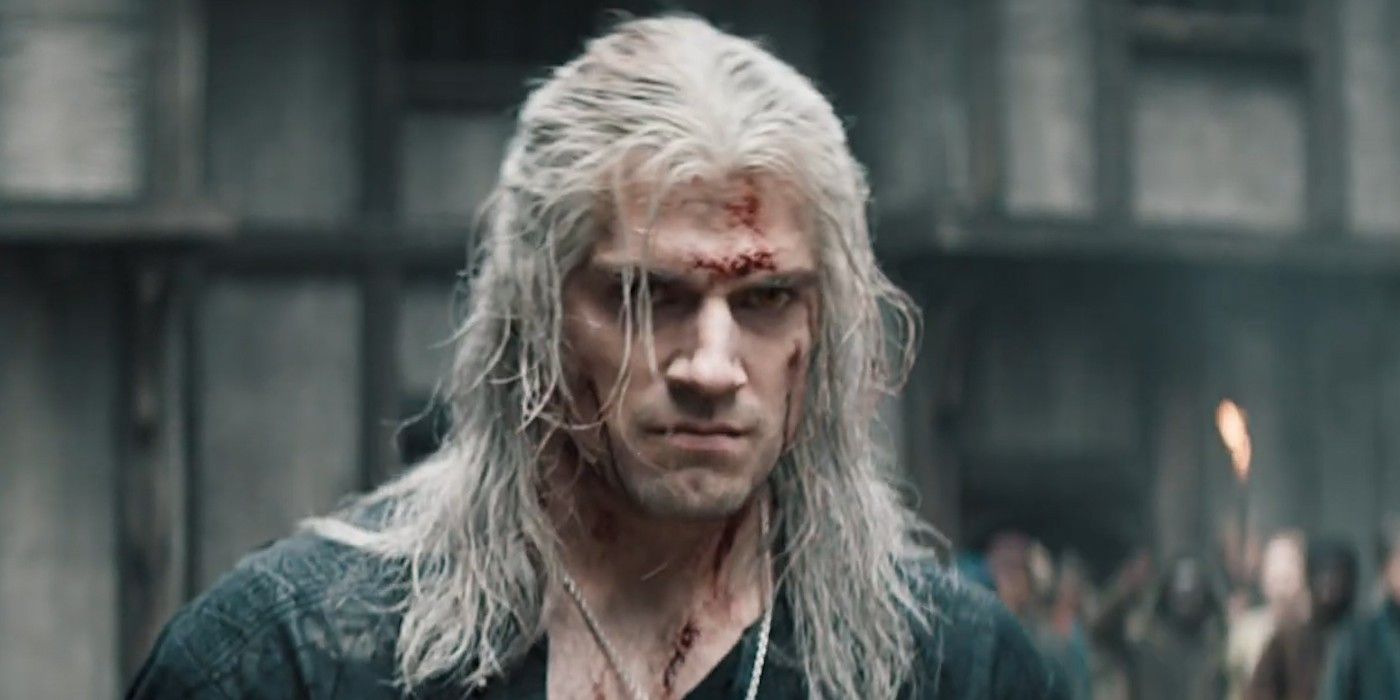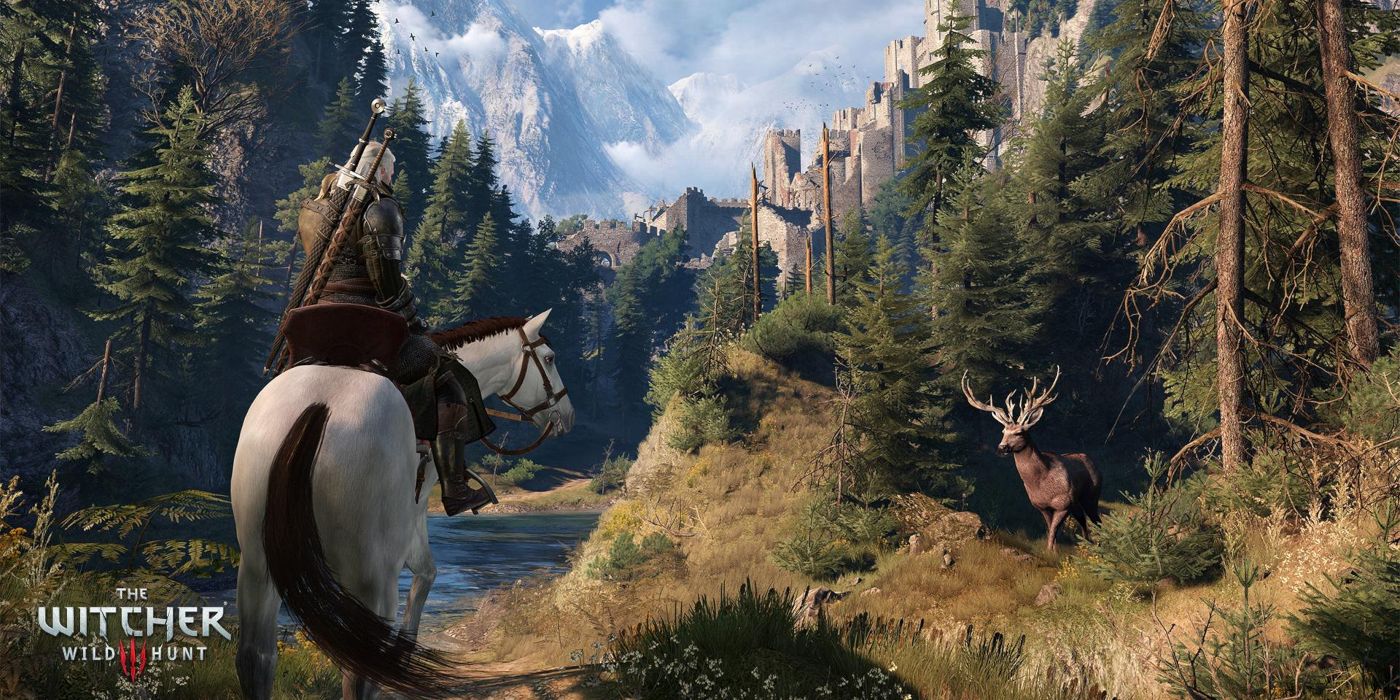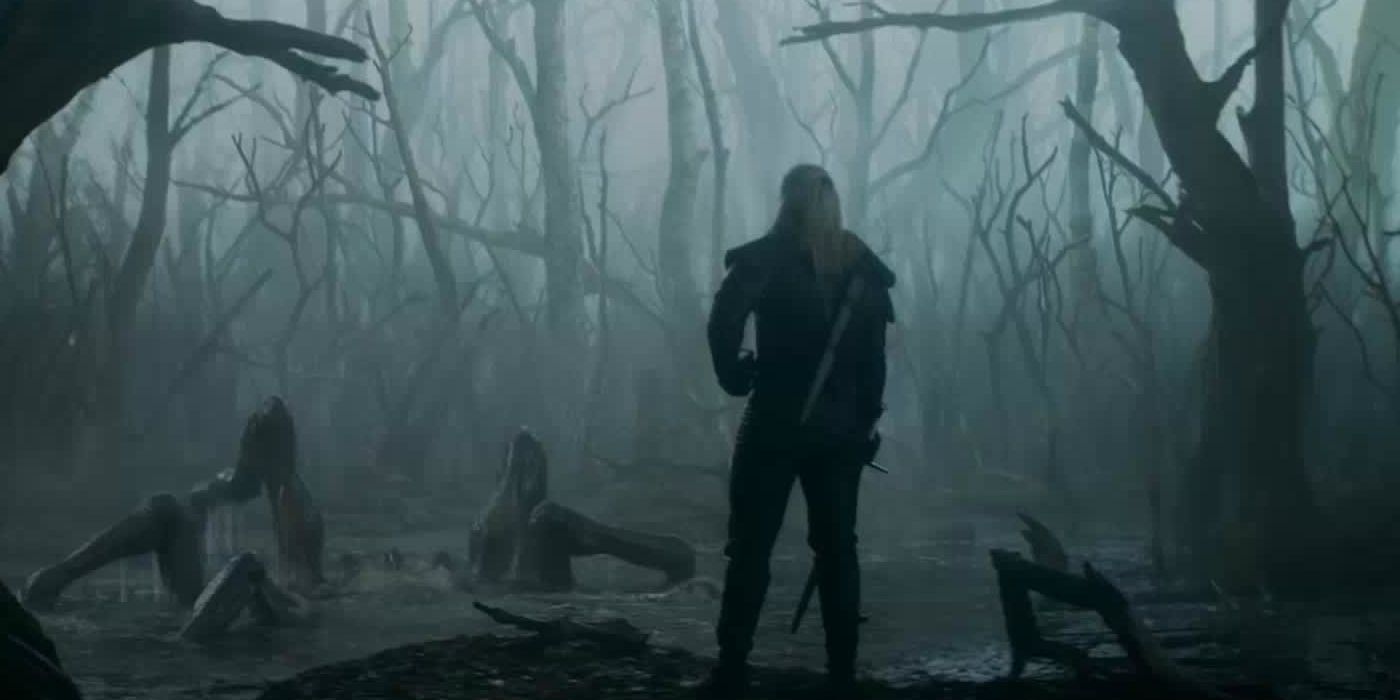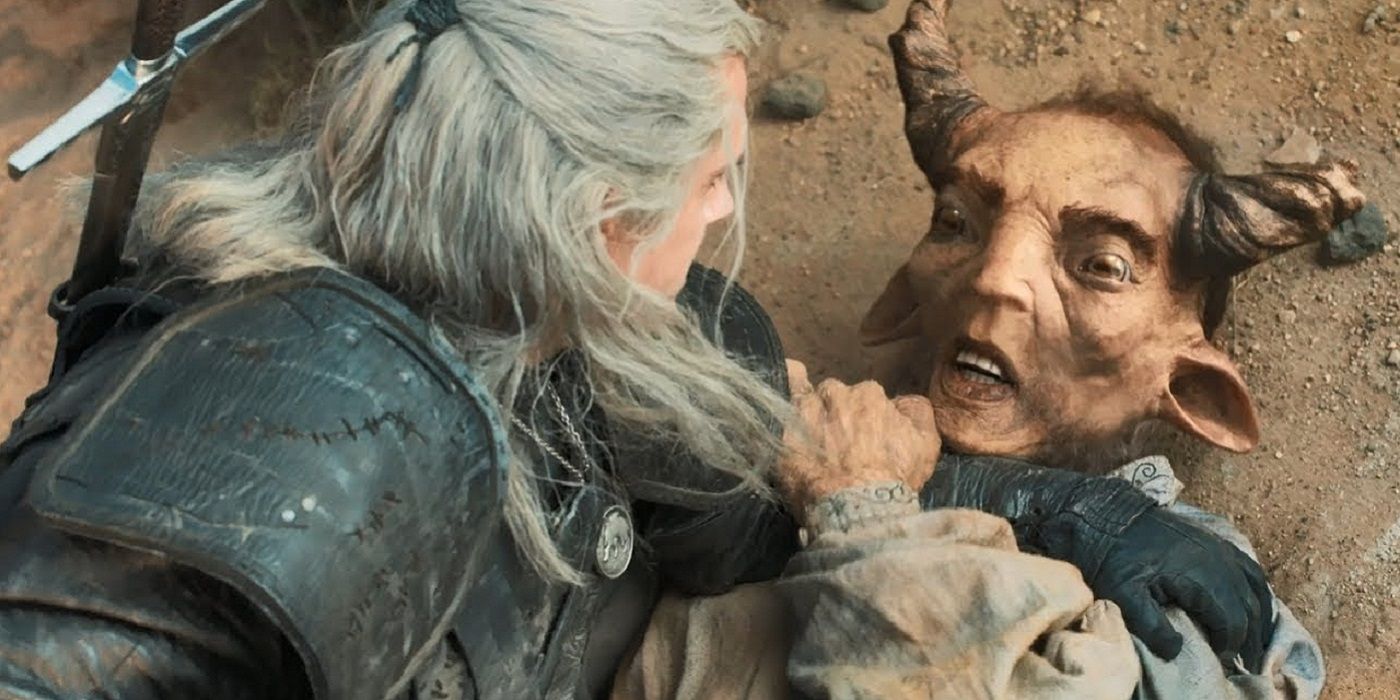The Witcher franchise, particularly the threequel, is known to many as one of the best RPGs of all time, but the recent Netflix series based on the same source material as the games has sparked renewed interest in the original books and the games alike.
There are many differences between the show and The Witcher games because they are different interpretations of the books. However, the show clearly made reference to the games in the visual appearance of Geralt and small details like the famous bathtub scene.
Even though the games and the show have their differences, the two are similar enough to draw plenty of comparison. Watching Geralt of Rivia wrestle with a Striga or negotiate with a dragon on-screen may spur many viewers to wonder just how tough these monsters are in the video games.
There are MAJOR SPOILERS ahead for the Netflix series, so anyone concerned about the narrative being ruined should watch the show before reading this article. Checking out an explanation of The Witcher's complex timeline will help understand the story even more before digging in to all the monsters shown and mentioned on-screen.
Basilisk
A basilisk is first mentioned in Episode 6 of the Netflix series. Geralt returns from defeating one only to be drawn into another adventure by a kindly old adventurer. So, what kind of ordeal did Geralt just return from?
Unlike folklore in our world and the world of The Witcher would suggest, the basilisks that Geralt might come across cannot turn anyone into stone with their gaze. These flying reptilian monsters attack with venom, claws, and wings.
In The Witcher and The Witcher 3, basilisks are not too hard to beat. While their venom is dangerous, they are weak to fire and ranged weapons. They can be a good source of XP and valuable basilisk hide once their moves become predictable.
Bruxa
Bruxas are only mentioned in passing during the Netflix series, never shown. Geralt mentions that he would rather use his promised child Ciri as “Bruxa bait” than subject her to the life of a Witcher. This phrase has even more impact if the viewer knows how strong a Bruxa can be.
Bruxas are some of the strongest vampires, appearing in both The Witcher 1 and 2 as well as the Blood and Wine expansion for The Witcher 3. They take on the appearance of beautiful women, are immune to damage from sunlight, can turn invisible, and send out sonic attacks, making them very dangerous. Just like any other monster though, they are susceptible to silver but are especially weak to being knocked down with a proper Witcher Sign. A fallen Bruxa can sometimes be killed with a single strike.
Cursed One
Duny, or Lord Urcheon of Erlenwald, is not really a monster. Rather, he is a human who was cursed to take on the form of an anthropomorphized hedgehog until a blessing of marriage to princess Pavetta broke his curse.
There are many forms of cursed humans in The Witcher, and the closest type to Duny are werewolves. They are also created by a curse and transform into their animal form at night just as Duny can only be human after midnight. Werewolves also gain incredible strength from their transformation. While it is not confirmed that he too gained strength from his curse, Duny was able to hold off a huge number of knights in combat while in his animal form.
What makes werewolves dangerous is their regenerative powers. They regenerate health so fast that a player who can’t deal huge amounts of damage very quickly will never be able to kill a werewolf. This combined with incredible speed makes werewolves very formidable foes.
Dragon
In Episode 6 of the Netflix series, Geralt helps an extremely rare golden dragon protect its young from treasure hunters. Dragons can shapeshift into human form and come in varying colors of differing rarity.
Dragons are some of the rarest sentient creatures in The Witcher series, and as such, Witchers like Geralt rarely choose to fight them, seeing them as a species worth protecting. This is also because dragons tend to shy away from humans, rarely attacking them without provocation. Even so, if met in combat, dragons are some of the toughest enemies to fight. They have many immunities, no weaknesses, and the powers of flight and deadly breath. A dragon can be fought in The Witcher 2, and because of their ability to take human forms, they can be encountered outside of combat during quests in the other games.
Djinn
A Djinn appears in episode 5 of the Netflix series. It is a powerful spirit trapped in an amphora, capable of granting wishes and wreaking havoc like a violent storm.
A Djinn also appears in The Witcher 3, and is just as powerful as a true force of nature. With level-scaling turned on, the Djinn is nearly impossible to beat. It moves quickly, can teleport, and can cast huge area of effect spells, some of which are unblockable. Any individual spell can kill the player instantly, and it will take over 100 attacks for Geralt to kill the Djinn. Turning off level-scaling is the only realistic way to win, which seems fitting for a wish-granting genie from another dimension.
Doppler
A doppler also appears in Episode 5 of the Netflix series. He is specifically sought out and contacted for nefarious ends because of his evil tendencies. However, most dopplers are gentle and kindhearted, making this evil individual an exception.
It is lucky that they are generally good-natured, because dopplers can take on not just the appearance of a human being, but also adopt their memories, skills, and traits. A doppler can be fought in The Witcher 3, and when it takes the form of Geralt, the fight becomes exceptionally tough. The doppler can use some of Geralt's spells and has sword skills to match, so staying defensive and waiting for openings is the only path to victory.
Ghouls
In the final episode of The Witcher, Geralt nearly dies to a pack of ghouls. He is poisoned by a bite, and only just survives with the help of a kindly merchant. Ghouls and other necrophages (corpse-eaters) appear in every Witcher game.
They lurk in cemeteries and battlefields, feasting on fresh corpses. Ghouls may appear like twisted humans, but they are nothing more than feral beasts. On their own, they are weak enough, but the true danger of a ghoul encounter is in their swarming numbers. Even the most powerful witcher could be overwhelmed by enough ghouls in a pack.
Kikimora
A Kikimora is the first monster shown in The Witcher Netflix series, slain by Geralt in the show’s opening sequence. These creatures are giant insects that behave similarly to ants. In the games, they are called Kikimores, and are relatively easy to kill. Slicing up this oversized bug was likely just a mundane day of work for Geralt.
Striga
A Striga first appears in Episode 3, the terrifying result of a cursed princess whose mother died before giving birth. The mother and child were laid to rest in the same tomb, but the cursed fetus slowly devoured its mother’s corpse, becoming a horrible abomination that crept out at nightfall to feast on hapless miners and civilians.
Geralt at first believed the monster to be a Vukodlak, a type of vampire not present in the games, but soon realized the truth of the matter. In order to defeat the Striga and transform it back into a human girl, he had to keep it away from its crypt until dawn.
A Striga is present in the first Witcher game, in another version of the same tale told in the Netflix series. The Striga is strong and fast, dealing a lot of damage by leaping out in surprise attacks. However, it does not have too much health or defense, and can be beaten away from its crypt when forced into the open.
Sylvan
A Sylvan appeared in The Witcher episode 2, but had been confused for a devil by superstitious townsfolk. The svelte Sylvan in the show had a very different appearance to those in The Witcher 3, however. Sylvans in the game are large, rotund, and smell terrible. Despite their awkward, portly proportions, they have incredible physical strength and can even breath flames. Taking them out from a distance is the best option.
On-Screen Monsters not in the Games
The Netflix series had a few monsters that have yet to be featured in any Witcher games. If another Witcher RPG comes out in the future, these beasts might be something to look forward to. For example, The Hirikka appears in episode 6 of the Netflix series but is not present in any of the video games. This is probably because they are even rarer than dragons and do not pose a threat unless they are starving. Unfortunately, the one in the show was killed by an overzealous knight, reducing their endangered numbers even more.
A Krallach is a fast, deadly insect with blade-like arms, used by an assassin in Episode 4 of the Netflix series to slaughter a troupe of armed guards and nearly kill Yennefer.
Manticores are mentioned in Episode 4 of the Netflix series as two nobles argue over who truly slew one of the mythical beasts. Geralt has clearly had experience with Manticores, since he states plainly that both men are lying. They are huge flying beasts that resemble lions with bat wings and scorpion tails, and are considered some of the deadliest monsters in the world, with Geralt surviving and encountering one in his youth. However, they have never appeared in a Witcher game, despite plans for their presence in The Witcher 3.
The Witcher is available on Netflix now. The Witcher 3 is available now on Nintendo Switch, PC, PS4, and Xbox One.

